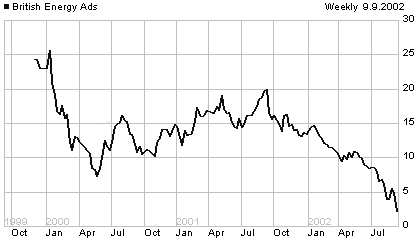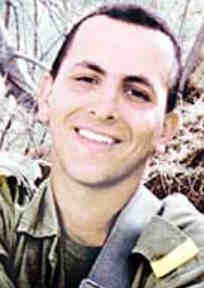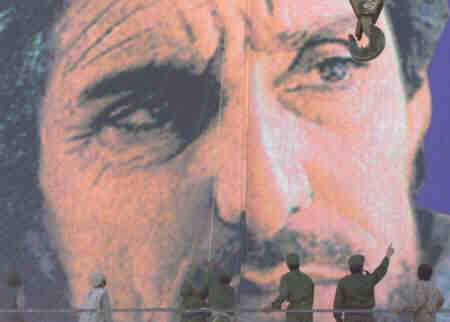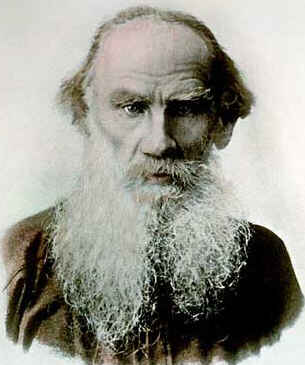1990 Samuel K Doe Liberian president, killed by rebels after being
captured.
1976 Mao Zedong (Tse-Tung),
82, Chinese revolutionary and statesman.
After leading a successful Communist
revolution, Mao proclaimed the People's Republic of China in
1949, with himself as both chairman of the Communist Party and
president of the Republic. His successes were tarnished by two
disastrous reform campaigns, first the Great Leap Forward (1958-1960),
and then, much worse, the bloody, contradictory, and self-destructive
Cultural Revolution (1966-1976).
Mao Zedong, who led the Chinese
people through a long revolution and then ruled the nation's
communist government from its establishment in 1949, dies. Along
with V.I. Lenin and Joseph Stalin, Mao was one of the most significant
communist figures of the Cold War. Mao was born in China in
1893. During the 1910s, he joined the nationalist movement against
the decadent and ineffective royal government of China and the
foreigners who used it to exploit China. By the 1920s, however,
Mao began to lose faith in the leaders of the nationalist movement.
He came to believe that only a revolutionary change of Chinese
society could bring freedom from Western domination and subjugation.
In 1921, he became one of the
founding members of the Chinese Communist Party (CCP). Mao's
early years as a communist were not easy. He was constantly
in danger of arrest and execution by Chinese government forces.
More importantly, he often split with his communist colleagues,
many of whom favored slavishly copying the Bolshevik Revolution
that brought communism to power in Russia. Mao insisted that
revolution in China would come from the country peasants, not
the urban workers.
In 1935, Mao took control of
the CCP. On the verge of defeat by Chinese Nationalist forces,
the CCP came under scathing attack by Mao for its lack of revolutionary
zeal and poor military strategy. Desperate, a majority of the
CCP members relinquished control to Mao. Throughout the 1930s
and into World War II, Mao's forces continued their attacks
on the Chinese government. They were ultimately victorious in
1949, and the communist People's Republic of China was declared
in that year. Mao made clear his dedication to constant battle
with the West when, in 1950, he sent hundreds of thousands of
Chinese troops into North Korea to battle US troops during
the Korean War. For nearly three years the war raged, ending
with a cease-fire in 1953.
In the late 1950s, Mao began
to withdraw from an active role in the Chinese government, but
he returned with a vengeance in the mid-1960s when he led the
"Cultural Revolution," which was designed to reinvigorate what
he saw as the nation's flagging revolutionary spirit. The "revolution"
amounted to frenzied calls from Mao and his supporters for greater
dedication to the true ideals of communism and increasingly
vociferous verbal assaults against both the Soviet Union (because
of its "revisionist" tendencies) and the "imperialism aggression"
of the United States. Thousands of Chinese were killed or imprisoned
by Mao's young supporters, called the Red Guards.
Internationally, forces were
pushing Mao to seek a closer relationship with the United States.
Since the early 1960s, relations between China and the Soviet
Union deteriorated steadily, and there were frequent border
clashes between their respective armed forces. By the late 1960s,
Mao came to see the Soviet Union as a more dangerous threat
to China than the United States. He therefore sought closer
relations with the Americans, hoping to use them as allies in
his battle with the Soviets. Mao's efforts resulted in a dramatic
change in relations between the US and China, climaxing in
President Richard Nixon's historic visit to China in 1972.
The meeting with Nixon was one
of Mao's last great public successes. Nearing 80 years of age,
Mao began to make less frequent appearances. He also began to
suffer the debilitating effects of Parkinson's disease. Mao
died in 1976, still holding the position of Chairman of the
Chinese Communist Party. |
1966 Léon de Smet, Belgian artist born on 20 July 1881.
1963 Over 3000 persons, by landslide into Vaiont Dam, Italy.
1945 a moth, the first computer
bug
Computer pioneer Grace Murray
Hopper found the first documented live bug in a computer on
this day in 1945. Although the term "bug" had been used to describe
technical glitches since the late 1800s, the bug that plagued
Hopper this day was an actual moth that had managed to get into
the circuitry of the Mark II computer at Harvard University.
The bug, which Hopper and her assistants removed with tweezers,
was preserved at the Naval Museum in Dahlgren, Virginia. |
1924 Patrick Mahon, executed for the murder (followed by dismebrment)
of his mistress Emily Kaye, in Sussex, England.
1909 Edward Harriman
After a life full of cash and
controversy, financier and railroad kingpin Edward Harriman
passed away in 1909. Harriman started his career as a broker's
clerk in New York, eventually saving up enough money to purchase
a seat on the New York Stock Exchange. Following this Alger-esque
rise to wealth and power, Harriman turned his attention to the
nation's rail lines and, along with a group of bankers, acquired
the troubled Union Pacific Railroad Company. By the time of
his death, Harriman's aggressive ways not only produced 60'000
miles of rail track, but also spawned a financial crisis and
raised the ire of more than a few people in the US, including
President Teddy Roosevelt. |
1901 Henri de Toulouse~Lautrec, French painter born on 24 November
1864 — MORE
ON TOULOUSE~LAUTREC AT ART “4” SEPTEMBER
— LINKS
— La Goulue
— Confetti
— Divan
Japonais — Alone
— The
Kiss — Justine
Dieuhl — A
Montrouge — Quadrille
Moulin-Rouge — A
la mie — Yvette
Guilbert — Women
Dancing — Women
of the Night Waiting
1897 David H. Lewis, author. DAVID LEWIS ONLINE: Roller
Skating for Gold
1897 Richard Holt Hutton, author. HUTTON ONLINE: Sir
Walter Scott
1885 Claude
Bouquet, mathematician
1883 Victor
Puiseux, mathematician
1874 Alonzo Delano, author. DELANO ONLINE: Alonzo
Delano's California Correspondence, Life
on the Plains and Among the Diggings
1870 Nathan Lord, author. LORD ONLINE: A
Northern Presbyter's Second Letter to Ministers of the Gospel of All
Denominations on Slavery
1869 (1867?) Walter Elmer Schfield, US artist who died in 1944.
1817 Paul Cuffe, 58, entrepreneur/ civil rights activist
1796: 20 Jacobins dont le Directoire
réprime la mutinerie.
Les directeurs Carnot et Letourneur
n'attendaient que cela, depuis quinze jours, ils savent qu'un
complot se trame. Les derniers Jacobins, autour de leur chef
Gracchus Babeuf, veulent tenter de renverser le Directoire.
Le chef du camp de Grenelle, le marquis de Foissac-Latour, a
été prévenu. Les babouvistes ont décidé de s'introduire dans
son camp pour rallier les soldats à leur cause. Dans la nuit
du 8 au 9, les choses se sont passées comme prévu pour les Directeurs.
Les Jacobins sont bel et bien venus. La mutinerie s'est levée
en chantant La Marseillaise. Un régiment de dragons s'est alors
abattu violemment sur les manifestants et les a dispersés. On
compte vingt morts officiellement. En ce 9 septembre, le Directoire
dispose enfin du prétexte dont il avait besoin pour en finir
avec l'opposition des Jacobins. Les arrestations commencent.
|
1739 Some 20 whites and 40
blacks in The
Stono Rebellion
Early on the morning of Sunday,
09 September 1739, twenty Black South Carolinians met near the
Stono River, approximately 30 km southwest of Charleston. At
Stono's bridge, they took guns and powder from Hutcheson's store
and killed the two storekeepers they found there. With cries
of 'Liberty' and beating of drums, the rebels, led by Jemmy,
raised a standard and headed south toward Spanish St. Augustine.
Along the road they gathered black recruits, burned houses,
and killed white opponents, sparing one innkeeper who was "kind
to his slaves."
Thus began the Stono Rebellion,
the largest slave uprising in the British mainland colonies
prior to the US War of Independence. Late that afternoon, planters
riding on horseback caught up with the band of sixty to one
hundred slaves. More than twenty white Carolinians and nearly
twice as many black Carolinians were killed before the rebellion
was suppressed. As a consequence of the uprising, white lawmakers
imposed a moratorium on slave imports and enacted a harsher
slave code.
Slaves frequently resorted to
insurrection, first in the British colonies and later in the
southern United States. At least 250 insurrections have been
documented; between 1780 and 1864, ninety-one African-Americans
were convicted of insurrection in Virginia alone. The first
revolt in what became the United States took place in 1526 at
a Spanish settlement near the mouth of the Pee Dee River in
South Carolina.
Between 1800 and 1831, Blacks
instigated several ambitious rebellions in the US South. Among
these were Gabriel's Revolt, which began north of Richmond,
Virginia, on 30 August 1800, and Vesey's Rebellion, an abortive
1822 conspiracy to incite as many 9000 plantation and urban
slaves in the vicinity of Charleston, South Carolina (free Black
Denmark
Vesey, 55, was hanged on 02 July 1822).
Nat Turner's Rebellion, the most
effectual slave revolt, erupted in Southampton County, Virginia
on the night of 21 August 1831. Turner and his followers, as
they moved toward an armory at Jerusalem, Virginia, killed nearly
sixty Whites. Halted a few kilometers from their goal, the approximately
seventy-five insurgents were soon killed or captured by the
militia. Turner's 11 November execution failed to assuage fears
of continued insurrection. Across the South, renewed legislative
efforts to forbid education and greatly restrict movement and
assembly further constrained the lives of enslaved people. |
1626 Abraham Govaerts (or Godevaerts), Flemish artist born on
30 August 1589. — Le Repos
de Diane — Paysage
à la chasse de Méléagre et Atalante
1513 King James IV of Scotland, defeated and killed by English at
Flodden Fields.
1087 William I The Conqueror, King of England, and Duke of Normandy,
in Rouen while conducting a war which began when the French king made
fun of him for being fat. — Débarqué en Angleterre avec ses normands,
il avait vaincu le roi Harold à la bataille d'Hastings le 10 octobre
1066. Devenu roi, il impose sa loi à l'Angleterre. Mais c'est en France
qu'il meurt, cinq semaines après une chute de cheval lors de sa prise
de Mantes..
0701 St Sergius I, Pope
|
 On
a 09 September:
On
a 09 September:  2002
Some 85 of the 200 Nepalese soldiers and policemen at district headquarters
in Sandhikharak, uncounted civilians and attacking Maoist rebels.
2002
Some 85 of the 200 Nepalese soldiers and policemen at district headquarters
in Sandhikharak, uncounted civilians and attacking Maoist rebels. 2001 Ahmed Shah Masood, 48, young Asim, and two suicide
bombers posing as journalists.
2001 Ahmed Shah Masood, 48, young Asim, and two suicide
bombers posing as journalists. 